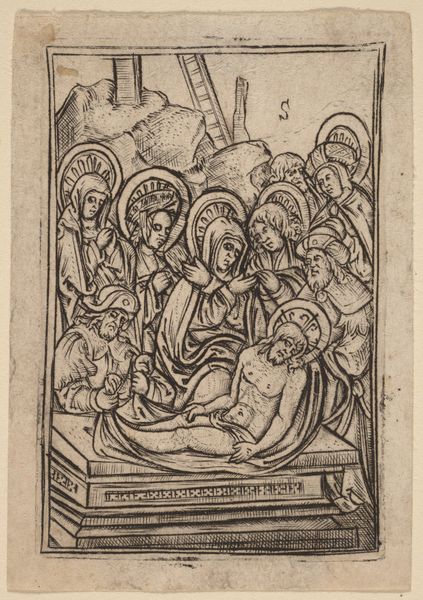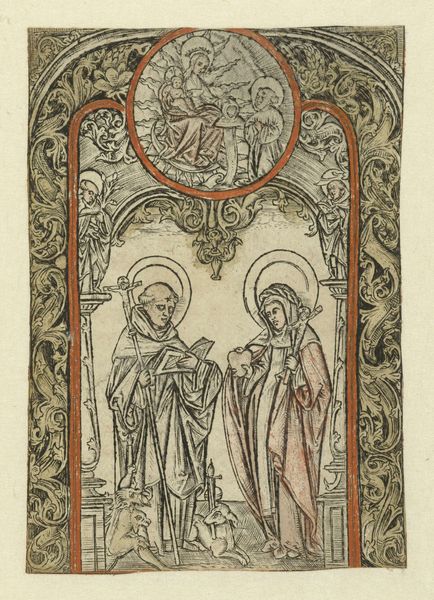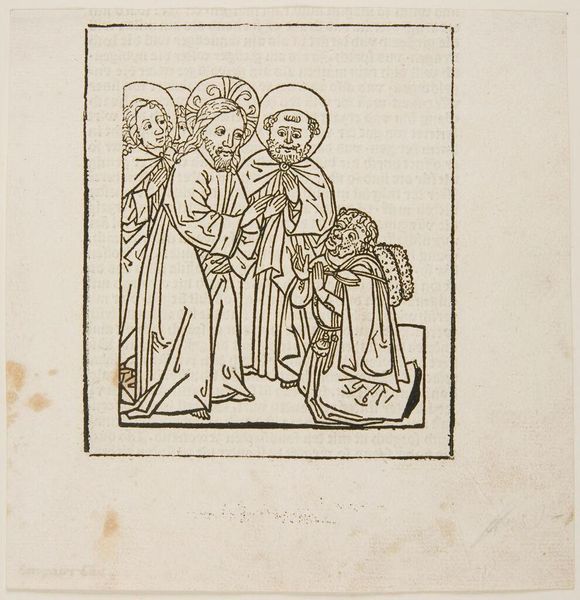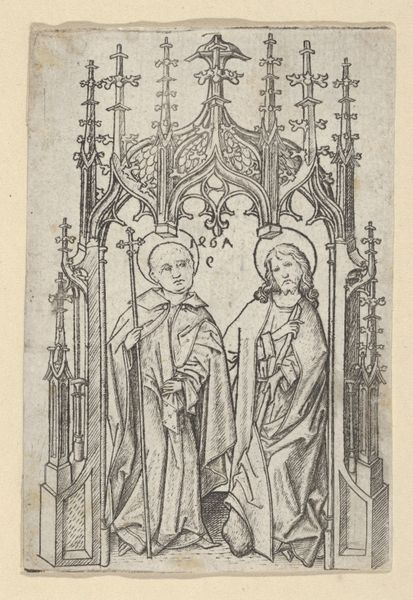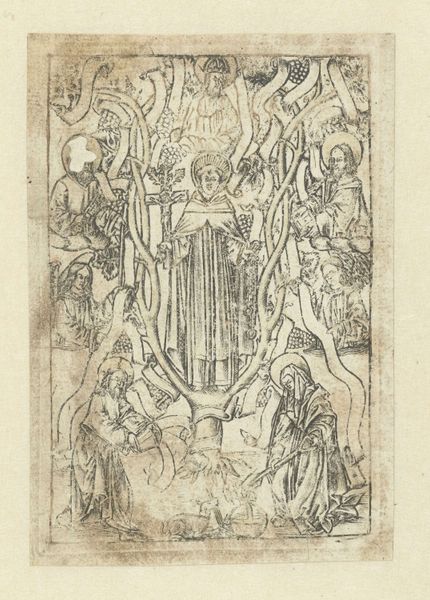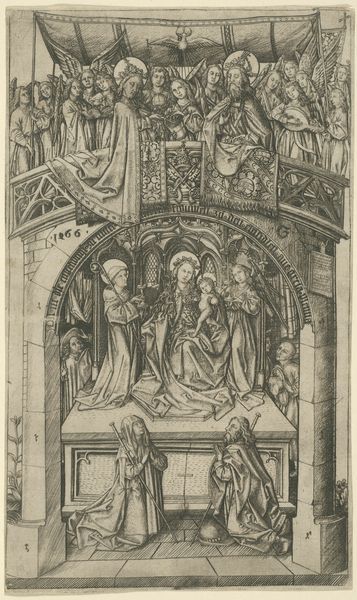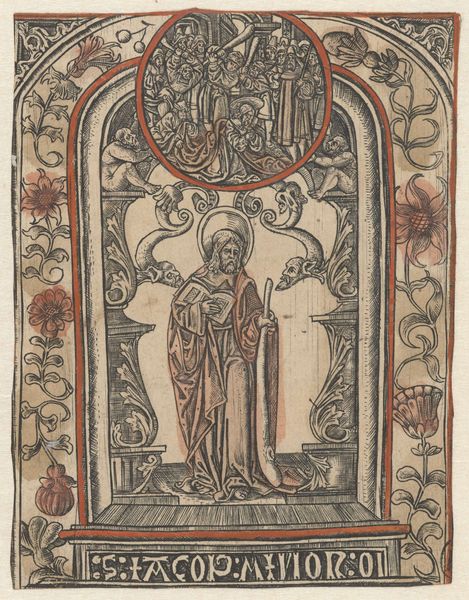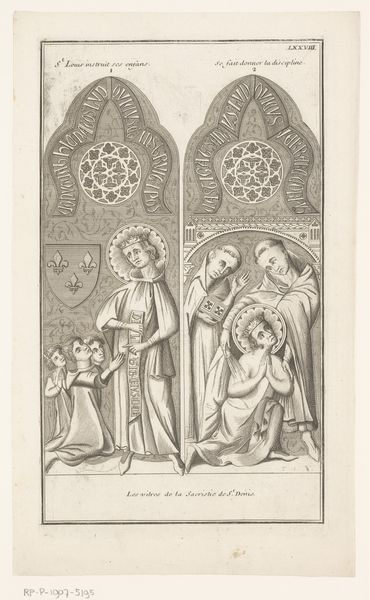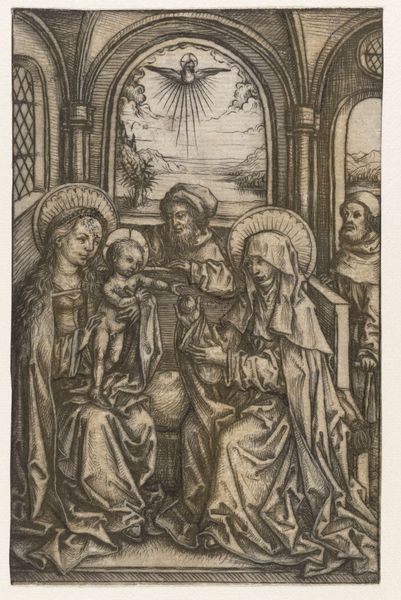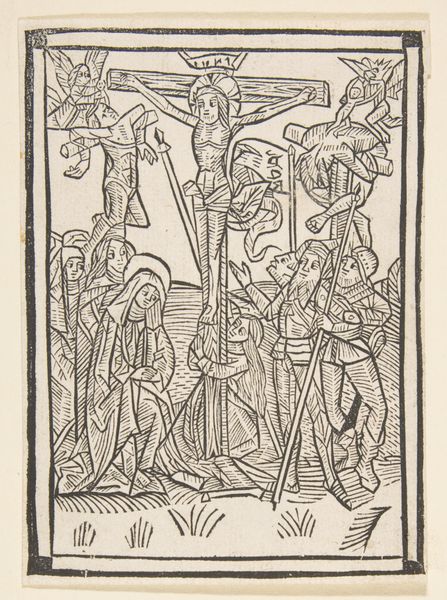
print, engraving
# print
#
figuration
#
history-painting
#
northern-renaissance
#
engraving
Dimensions: height 82 mm, width 56 mm
Copyright: Rijks Museum: Open Domain
Curator: Here we have a print entitled "The Holy Family with Anna and Joachim" created between 1450 and 1500 by Israhel van Meckenem. It's an engraving, part of the Rijksmuseum collection, and exemplifies Northern Renaissance art. Editor: It strikes me as quite a formal depiction, wouldn’t you say? The figures are carefully arranged, and the detail, particularly considering it’s an engraving, is remarkable. There's almost a somberness, despite the subject matter. Curator: Absolutely. We need to consider the context of this piece. As a print, it would have been relatively accessible compared to, say, a painted altarpiece. Think of its potential as a devotional object, meant to be contemplated in the home. Editor: That’s a great point. Were images such as this typically geared towards women and domestic life? It feels maternal. Curator: Yes, that’s very possible, but devotion in the home crossed gender lines in ways that resist some of our modern assumptions about public vs private life. Think too about the figures included—Anna and Joachim, Mary’s parents, solidify this sense of familial importance. The arrangement emphasizes lineage. But tell me more about this idea of it "feeling" maternal? Editor: Well, look at the central grouping of Mary and the Christ Child, framed almost reverently by her parents. There is this emphasis on the passing of care. As someone looking at this piece today, I find myself meditating on historical experiences of motherhood, or family, beyond purely patriarchal lenses, even when it portrays an explicitly Christian and arguably heteronormative motif. Curator: The materiality would also be important in that discussion. It being a print is also quite critical when discussing domestic devotion: a move to an affordable artistic medium opens devotion up to the wider public. This could have then also influenced shifts in understanding of gender roles, domestic life and family for individuals accessing them. Editor: Precisely. And this form suggests repetition and mass distribution: something we would perhaps associate today with activist messaging. It prompts thoughts of art functioning as both propaganda and self-validation, even across the centuries. Well, I think I might keep an eye out for Israhel van Meckenem. Curator: And next time consider more deeply just how gender roles function to open channels of meaning. Always a good reminder!
Comments
No comments
Be the first to comment and join the conversation on the ultimate creative platform.

